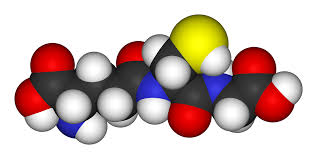Elemental vulcanizing agent
Typical representative is sulfur, the rubber industry is the most basic and most important curing agent. The vulcanizing agent has the advantages of good comprehensive performance and low cost by using common sulfur-accelerator-activator system. Therefore, in the rubber industry, especially in the tire industry is still dominated. Insoluble sulfur to avoid sulfur, also not easy to burn, can be used for particularly important parts or products.
First,sulfur, sulfur used in the rubber industry has sulfur powder, insoluble sulfur, colloidal sulfur, precipitated sulfur, sublimed sulfur, deacidified sulfur, non-crystalline sulfur. In 1839, American Charles Goodyear will be sulfur and rubber mixed heating system to obtain better performance of the material, this landmark discovery, prompting people to have started the reaction mechanism of sulfur vulcanized rubber, reaction heat history, reaction dynamics and other in-depth the study. After more than 100 years of development, in 1979, Lautenschlaeger et al. Simulated the vulcanization of natural rubber with 2-methyl-2-pentene, and finally determined the terminal structure, external network structure and main chain isomerization reaction product . As a rubber vulcanizing agent, the development of sulfur after more than 100 years. Compared with other types, the price of sulfur is low, the comprehensive performance of vulcanized rubber is good, so it is still the leading vulcanizing agent in international rubber industry, accounting for 85% of the total composition of dozens of organic and inorganic vulcanizing agents. In order to meet the needs of the development of rubber, the emergence of sulfur new products, such as the French MLPC International S80 GA F500 (yellow granular products), which is sulfur in acrylic derivatives elastomer precursors, which sulfur content of 80% . The product is dust-free, does not pollute the environment; room temperature is not sticky, more easily feeding and weighing.
Insoluble sulfur. Ordinary sulfur vulcanized rubber in the parking, prone to blooming, and scorch tendency, greatly affect the performance of the final product. To make up for the shortage of sulfur, people began to modify the sulfur research, a successful example of polymer sulfur or insoluble sulfur (Insoluble Sulfur), referred to as IS, the sulfur is insoluble in carbon disulfide linear polymer sulfur, model. The average molecular weight of this polymerized sulfur is very large, and it is generally believed that its molecular weight is 30,000 to 40,000. Insoluble Sulfur in use is usually divided into oil-filled and oil-filled two categories, while the vast majority of industrial use (* 99%) is oil-filled type. Compared with ordinary sulfur, insoluble sulfur has the following advantages: (1) the compound will not appear in the storage period of blooming; (2) no migration in the rubber compound (especially in the butadiene rubber and butyl rubber compounds (4) can be conducive to rubber and other materials, adhesion; (5) can shorten the curing time, reduce the amount of sulfur. (3) can reduce the mixing and storage of the scorch phenomenon;
Second,selenium, tellurium. For natural rubber and styrene-butadiene rubber of the second curing agent, when used alone can not cure.

 Pусский
Pусский


